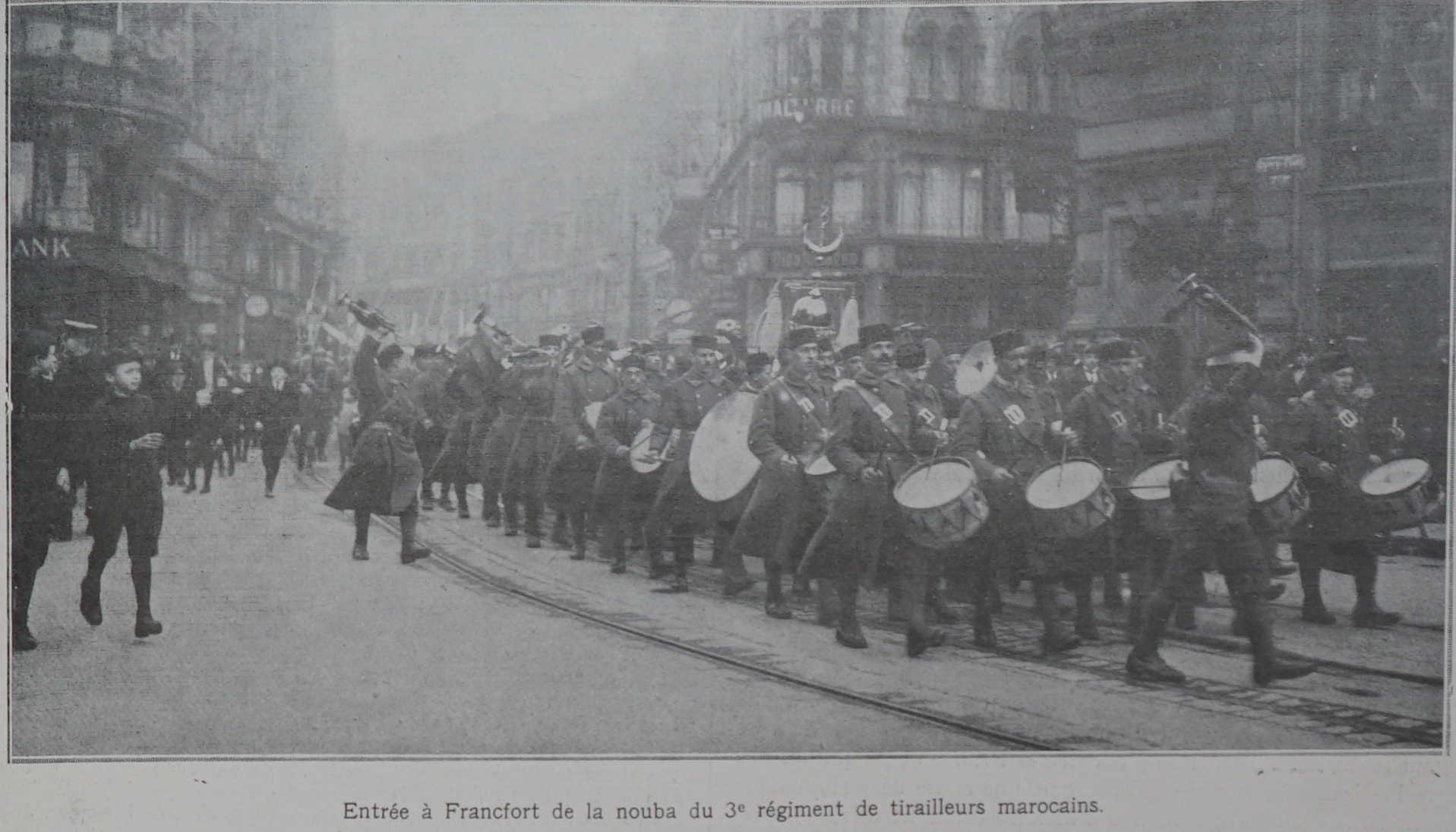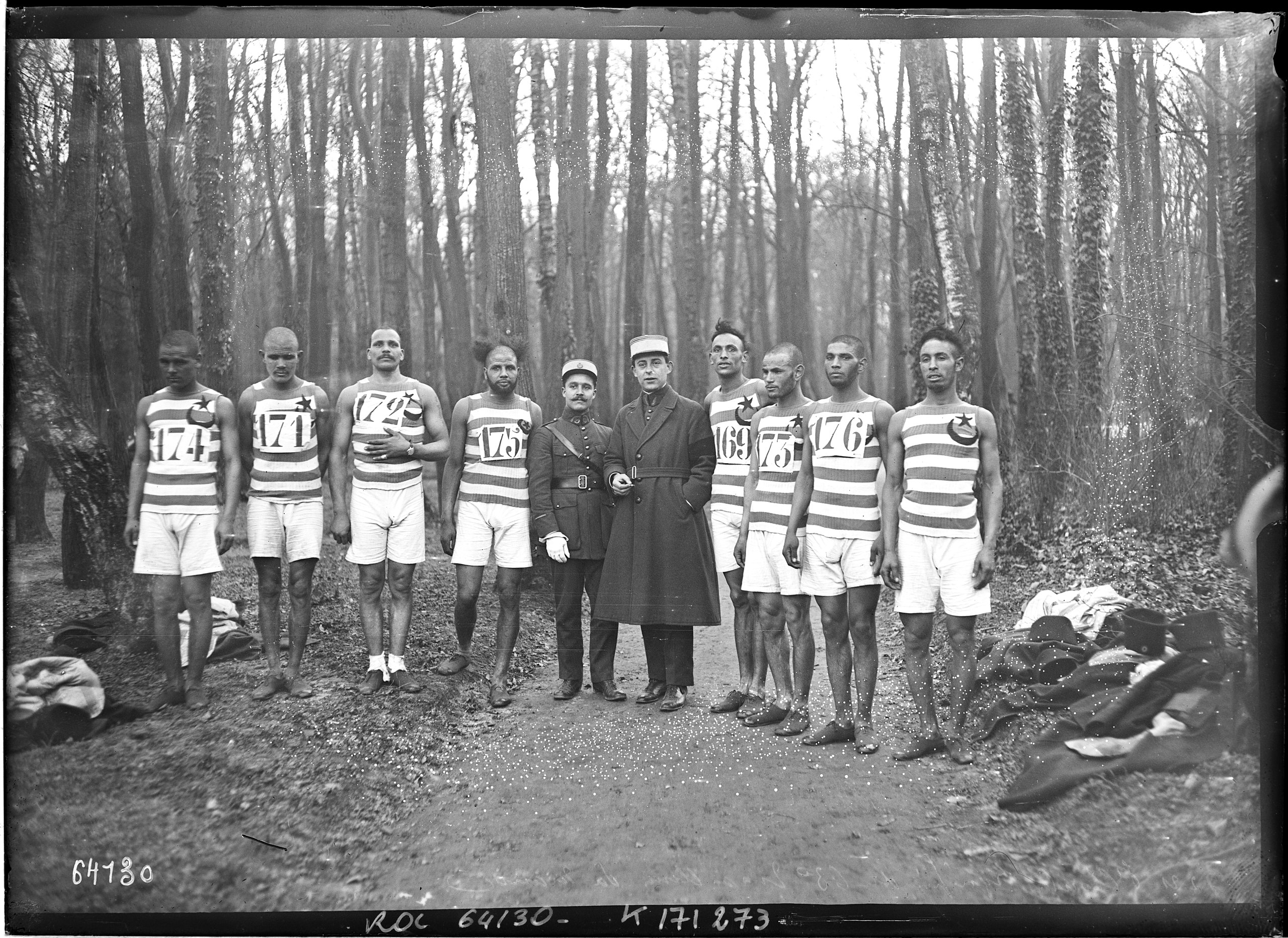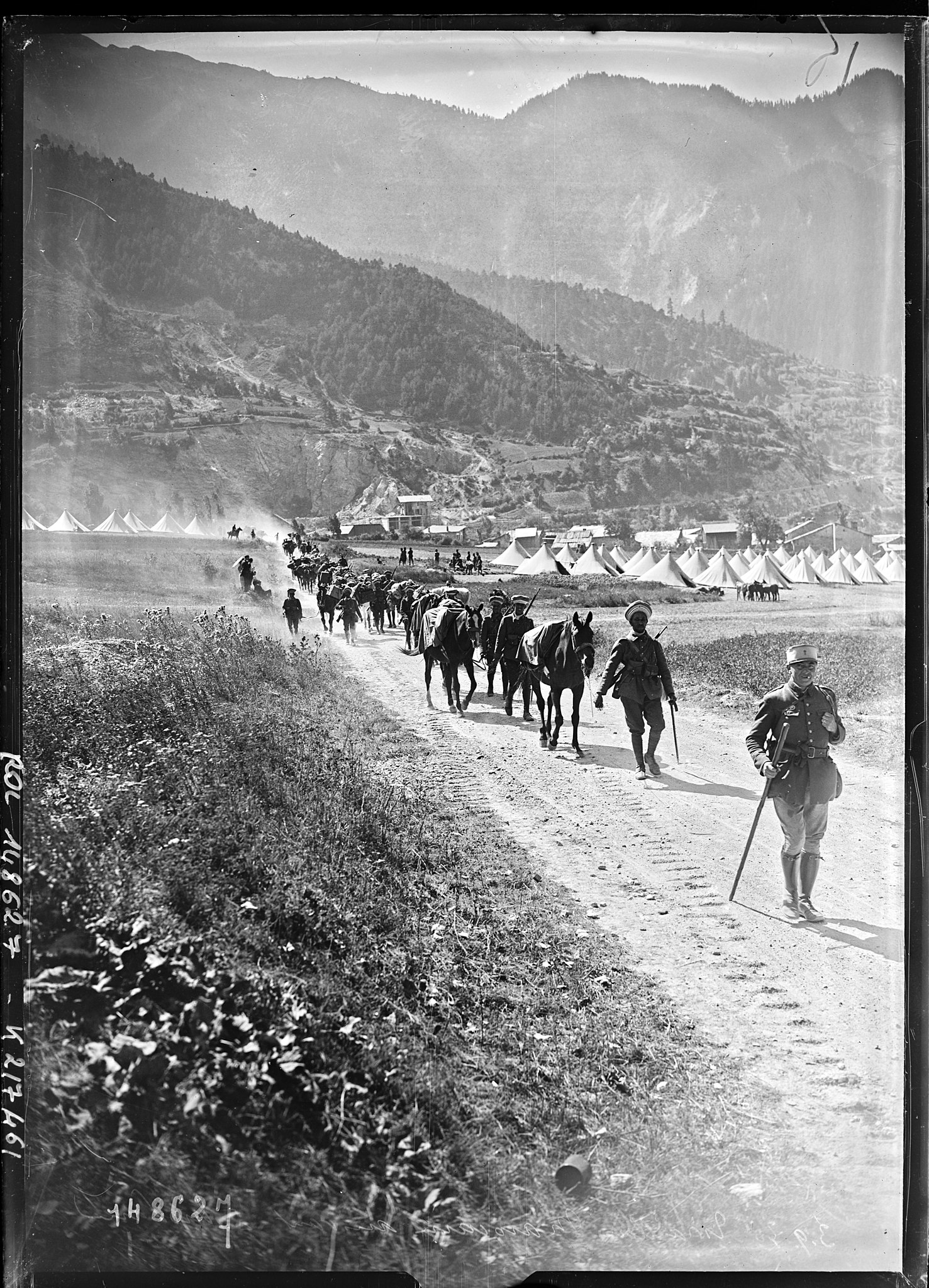Swallows of Death:
Les Marocains, Part Two
by Mike Bennighof, Ph.D.
April 2023
The massive blood-letting of the First World War didn’t end the French government’s desires for colonial conquests, but did make it very chary of French lives. Both Moroccan regiments took part in the Allied occupation of the Rhineland following the First World War, as did the “Moroccan” division formed from other regiments stationed in the French Protectorate of Moroccan (Foreign Legion, Algerian, Tunisian and white settlers).
In the Spanish protectorate, the northern coastal strip of what today is the Kingdom of Morocco, the colonial rulers faced determined resistance in the Rif Mountains. Led by Abd el-Krim, the Republic of the Rif inflicted repeated defeats on the Spanish in the years just after World War One.
The French intervened in the conflict in 1924, following a coordinated attack against French border posts by Abd el-Krim’s forces, that left over 1,000 French soldiers dead. Marshal Philippe Pétain, the hero of Verdun, led an expeditionary force that eventually totaled 160,000 men, including both Colonial and Metropolitan forces with tank and aircraft support.

The 3rd RTM's band parades through Frankfurt, 1920.
The Rif War, and other disturbances in French Morocco, demanded more manpower. And with the French Army reluctant to send young French draftees overseas, that meant increased recruiting for the Moroccan regiments as well as the irregular Goumiers. Three more regiments of Motoccan Tirailleurs were established in 1920, a sixth in 1921, a seventh in 1926 and an eighth in 1927. The Rif was pacified by 1926 and the French withdrew from the Spanish zone, but unrest continued in French Morocco until the eve of the Second World War. After the Rif had been secured, Moroccan regiments also saw duty in the new French Mandate of Syria.
In metropolitan France, the French Army organized itself as a massive training organization. The “regular” units actually had large numbers of raw recruits in their ranks, undergoing their initial training period. These men then passed into reserve formations.
That meant that the Army could not provide troops on short notice for anything short of a full-scale war, and one that only began after a period of tension allowed mobilization. Just as the colonial regiments provided the manpower for overseas adventures, so did they guard the borders of France in peacetime.
So that these regiments could continue to train new recruits and replace men who had completed their enlistment, they were “twinned” with regiments that remained in Morocco. The regiment in Morocco would induct new men, train them, and then swap a contingent (at times, an entire battalion) with its “twin” serving in France. The older men could then be mustered out at home.
In practice, that worked out less well than on paper, as the trades rarely included balanced numbers of officers, NCO’s and trained specialists. But it kept the Moroccan regiments stationed in France or Syria at something approaching full strength and ready for immediate deployment.

Members of the 3rd RTM's soccer team.
While the French Army could (and did) induct conscripts in its other African colonies, by law it could not do so in Morocco. A French protectorate, Morocco still had a Sultan and court, though they possessed no power, and therefore only volunteers could be recruited in Morocco. Most recruits came from a rural peasant background, and appear to have seen the Moroccan regiments as a continuation of the Sultan’s army and therefore not an alien institution. While Moroccan troops were denied “Saint Pinard,” the daily ration of three-quarters of a liter of red wine, French cadre appear to have happily shared theirs within the barracks, and alcoholism appears to have driven some Moroccan enlistments.
Soldiers who completed their four-year term were exempt from the prestation, the French tax of 12 days of labor per year (or its cash equivalent) on public works projects. Many signed up for additional tours. Senior officers, and many junior and non-commissioned officers, were French. But the Meknes Military School, established in 1918, had turned out a large number of native Moroccan commissioned officers who usually filled half of the slots at the company level and below.
The eight existing regiments would be joined by two newly-raised ones when World War Two broke out. The 1st, 2nd and 7th regiments went to the 1st Moroccan Infantry Division, formed in September 1939 in Mekes and transferred to Oran, Algeria in late October for transport to France. After landing in Marseille, the division moved by rail to the front, arriving on 14 November.
The 3rd Moroccan Tirailleurs had already moved to France in 1935 as part of the Maginot Line garrison, and when the French Army mobilized for war the regiment joined the Metropolitan French 43rd Infantry Division which moved to the Belgian frontier. Like 1st Moroccan Division’s regiments, it would be involved in the fiercest battles of the 1940 campaign.
The 4th Moroccan Tirailleurs mobilized at their home station in Morocco and moved to Algeria in November 1939 to join the 82nd North African Division for transport to France. They arrived at the front in April 1940, taking up positions facing the German Saarland. They would also bear the brunt of the May offensive.
In 1933 the 5th Moroccan Tirailleurs moved to the Franco-Italian border, where they trained as a mountain unit and formed ski patrols in each battalion. They became part of the 1st North African Infantry Division during the 1939 mobilization, and when the Germans broke through French defenses they rushed to the front, suffering enormous casualties at La Quesnoy but halting the enemy advance.

The 6th RTM camped amid the French Alps, 1930.
Likewise, the 6th Moroccan Tirailleurs had gone to the French Alps in 1928 and patrolled the Franco-Italian border for the next decade. In 1939 they joined the 5th North African Infantry Division, which saw heavy fighting in Belgium and in the Siege of Lille. The 8th Moroccan Tirailleurs protected the German and Swiss border in upper Alsace; a secret agreement made the regiment the unit that would adjoin the left wing of the Swiss Army in the event of a German attack on Switzerland and France. The regiment joined the metropolitan French 13th Infantry Division upon mobilization in 1939, and went to the Somme line in June 1940 where it saw intense fighting in the German Case Red Offensive, including at L’Isle Adam.
The 9th and 10th Moroccan Tirailluers drew on the training battalions left in Morocco after mobilization, and the 4th Battalion of the 7th Regiment stationed on Corsica. The 9th Regiment, part of the 6th North African Infantry Division, saw action in Lorraine in May and June. The 10th Regiment joined the 7th North African Infantry Division which formed in April, and fought along the Somme line in June.
While all of the Moroccan regiments fought well, even those assembled after mobilization, the elite remained the three regiments of the 1st Moroccan Infantry Division. In February 1940 the division received a new commander in Albert Raymond Mellier, the former director of indigenous affairs in the Morocco Protectorate. Well-known to officers and men, and speaking fluent Arabic, Mellier led his division from the front, using a motorcycle to keep himself constantly at the crucial point.
When the Germans struck in May, 1st Moroccan Division formed part of IV Corps in 1st Army, sent into Belgium to meet the advance. Heavily engaged in the Battle of Gembloux, the Moroccans fought the German XVI Panzer Corps to a standstill in three days of bloody fighting. The Germans never penetrated the Moroccan line despite mass tank assaults and heavy use of Stuka dive-bombers. With screams of Allah Akbar! a battalion of the 7th Moroccan Regiment launched a mass bayonet charge against the tanks of 4th Panzer Division, driving the panicked panzers from the battlefield at the cost of heavy casualties. In only three days of fighting the division had suffered 27 percent casualties. The Moroccans fought in the Lille Pocket at the end of May, with most of the division staff and many of its troops captured when the pocket surrendered. The remnants of the division continued to fight until France laid down her arms on June 24th.
Organized as a standard French infantry division, 1st Moroccan Division had three infantry regiments, each of three battalions. In peacetime the Moroccan regiments had four or five battalions; upon French mobilization the extra battalions were detached for duty in Syria or other colonies. The division had a light artillery regiment, made up of mixed French and Moroccan personnel, and a heavy artillery regiment, almost exclusively manned by Frenchmen.
The Moroccan regiments would rise again after the Armistice, and formed the core of the Free French forces fighting in the Mediterranean theater. They also fought in Indochina and served in the French forces in post-war Germany, until their disbandment in 1964.
You can order Swallows of Death right here.
Please allow an additional three weeks for delivery.
Sign up for our newsletter right here. Your info will never be sold or transferred; we'll just use it to update you on new games and new offers.
Mike Bennighof is president of Avalanche Press and holds a doctorate in history from Emory University. A Fulbright Scholar and NASA Journalist in Space finalist, he has published a great many books, games and articles on historical subjects; people are saying that some of them are actually good.
He lives in Birmingham, Alabama with his wife, three children, and new puppy. He misses his lizard-hunting Iron Dog, Leopold.
Want to keep Daily Content free of third-party ads? You can send us some love (and cash) through this link right here.
|
